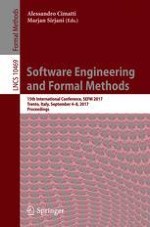2017 | OriginalPaper | Chapter
Specification and Semantic Analysis of Embedded Systems Requirements: From Description Logic to Temporal Logic
Authors : Nesredin Mahmud, Cristina Seceleanu, Oscar Ljungkrantz
Published in: Software Engineering and Formal Methods
Publisher: Springer International Publishing
Activate our intelligent search to find suitable subject content or patents.
Select sections of text to find matching patents with Artificial Intelligence. powered by
Select sections of text to find additional relevant content using AI-assisted search. powered by
